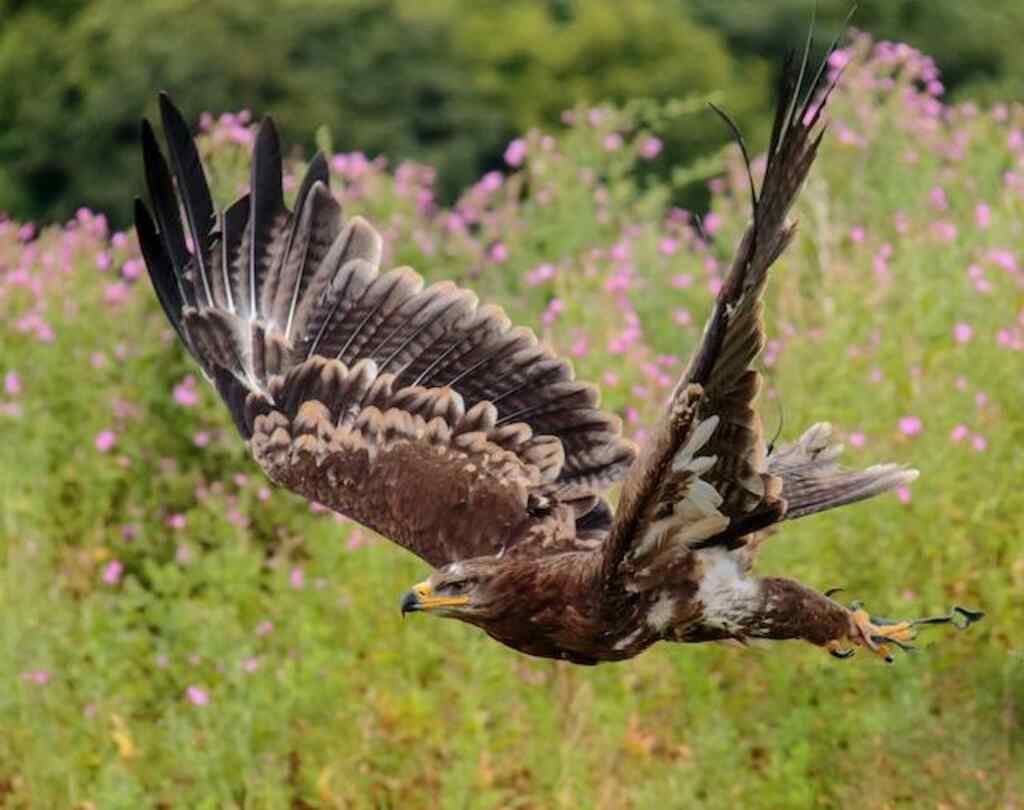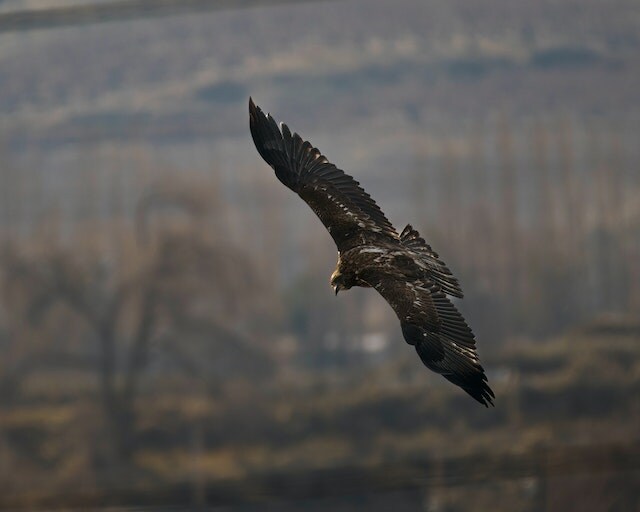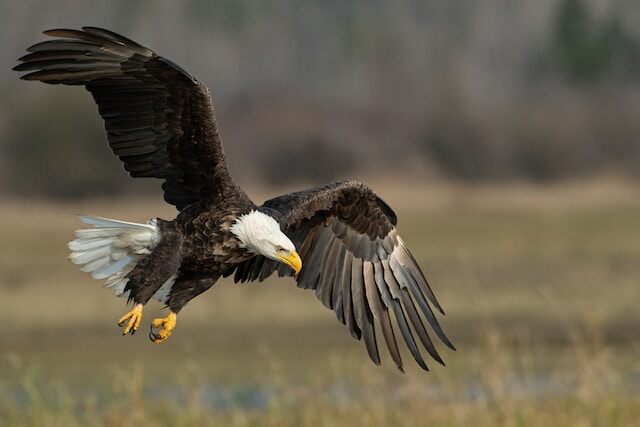You may be wondering, do eagles eat shrews? While eagles primarily hunt fish and smaller mammals, they do sometimes eat shrews, especially if they’re available in their hunting territory. Eagles have a broad diet and will hunt a variety of prey, including small mammals, reptiles, and even birds. In this article, we’ll explore the diet of eagles and how they hunt for different types of prey, including shrews.
Table of Contents [show]
Key Takeaways
- Eagles have diverse prey preferences and hunting techniques, targeting fish, small mammals, waterfowl, birds, and other raptors depending on their adaptations and habitat.
- Shrews, small mammals ranging from 2 to 5 inches found worldwide, can serve as prey for eagles, although they provide less sustenance and pose challenges due to their agility and ability to burrow underground.
- Numerous studies have shown that eagles consume shrews, indicating their significance as prey for these birds of prey.
- Understanding the diet and hunting behavior of eagles, including their consumption of shrews, is essential for conservation efforts and ecosystem management.

The Predatory Nature of Eagles
The predatory nature of eagles is exemplified by their ability to efficiently capture and consume small mammals such as shrews.
Eagle hunting techniques have been extensively studied to understand how these majestic birds of prey are able to successfully catch their prey.
Research on the eagle diet has revealed that shrews are indeed a common food source for eagles, particularly for certain species that inhabit regions where shrew populations are abundant.
Eagles employ various hunting strategies, including aerial pursuit and surprise attacks, to capture shrews and other small mammals.
These techniques demonstrate the adaptability and resourcefulness of eagles in acquiring their prey.
Understanding the diet of eagles provides valuable insights into their ecological role and their interactions within their respective ecosystems.
Moving forward, it is essential to delve deeper into the feeding habits of eagles to gain a comprehensive understanding of their ecological impact.
Understanding the Diet of Eagles
This paragraph will discuss variations in diet among different eagle species, their prey preferences, and hunting techniques.
Variations in diet among different eagle species can be attributed to their habitats and availability of prey.
Some eagle species have a preference for certain types of prey, such as fish or small mammals, while others are more opportunistic and will consume a wide range of prey.
Eagles employ various hunting techniques, including aerial hunting, perch hunting, and cooperative hunting, depending on the type of prey and the habitat they inhabit.
Variations in Diet Among Different Eagle Species
Variations in diet among different eagle species reveal the diverse prey preferences of these majestic birds, giving us a glimpse into the intricacies of their ecological roles. These variations also have a significant impact on ecosystems.
Here are three examples that illustrate the range of prey consumed by different eagle species:
- The Bald Eagle, found in North America, primarily feeds on fish, but it also scavenges on carrion and opportunistically preys on waterfowl and small mammals.
- The Golden Eagle, found across North America, Europe, and Asia, has a more varied diet. It hunts small to medium-sized mammals like rabbits, hares, and ground squirrels, but can also take larger prey such as foxes and deer fawns.
- The African Fish Eagle, as the name suggests, primarily feeds on fish, but it also consumes waterbirds, turtles, and even baby crocodiles.
Understanding these variations in prey preference and hunting techniques sets the stage for exploring the subsequent section on how eagles select their prey.
Prey Preference and Hunting Techniques
Prey preference and hunting techniques of different eagle species provide valuable insights into their ecological roles and impact on ecosystems.
Eagles exhibit a wide range of prey selection, depending on their specific adaptations and environmental factors.
Larger species, such as the bald eagle and golden eagle, primarily target fish, small mammals, and waterfowl.
They employ various hunting strategies, including soaring, perching, and diving to catch their prey.
Smaller eagle species, like the African crowned eagle, primarily feed on small mammals, such as monkeys and rodents, while the harpy eagle targets arboreal prey like sloths and monkeys.
These variations in prey selection and hunting strategies reflect the diverse ecological niches occupied by different eagle species.
Understanding these dynamics is crucial for conservation efforts and maintaining the balance of ecosystems.
Moving forward, we will explore the common prey of eagles and their impact on local ecosystems.

Common Prey of Eagles
The diet of eagles commonly consists of small mammals, birds, and fish.
Small mammals such as shrews, rabbits, and rodents are frequently targeted by eagles due to their availability and high energy content.
Birds, including waterfowl and game birds, are also a significant part of an eagle’s diet, especially during the breeding season when they are easily captured.
Additionally, fish make up a substantial portion of an eagle’s diet, with species like salmon, bass and trout being favored for their high protein content.
Small Mammals as Prey
Small mammals, such as shrews, are commonly consumed by eagles as part of their diet. Eagles exhibit a diverse range of prey selection and hunting strategies, but small mammals are frequently targeted due to their accessibility and abundance.
Research has shown that eagles possess adaptations such as sharp talons and strong beaks, which enable them to capture and immobilize small mammals effectively.
Additionally, eagles are known to employ various hunting techniques, including aerial attacks and ambushes, to catch their prey.
Studies have also revealed that eagles tend to select smaller mammals like shrews, which are easier to handle and consume.
Understanding the eagles’ preference for small mammals provides valuable insights into their foraging behavior and helps to elucidate their ecological role.
Transitioning into the subsequent section, eagles also commonly prey on birds as part of their diverse diet.
Birds as Prey
Birds are a significant component of the eagles’ diet, contributing to their diverse foraging behavior and ecological impact.
Eagles are opportunistic predators that exhibit a wide range of prey selection and hunting behavior. They are known to target various species of birds, including waterfowl, seabirds, and even other raptors.
The choice of bird prey depends on factors such as availability, vulnerability, and energy requirements. Eagles employ various hunting techniques, such as aerial pursuit, surprise attacks, and scavenging.
They have sharp talons and powerful beaks that enable them to capture and kill their avian prey effectively.
By preying on birds, eagles play a crucial role in regulating bird populations and maintaining ecosystem balance.
Transitioning to the subsequent section about ‘fish as prey,’ eagles also have a strong affinity for aquatic habitats, making fish an important part of their diet.
Fish as Prey
Fish form a significant part of the eagles’ diet, contributing to their ecological impact and foraging behavior due to their strong affinity for aquatic habitats.
Eagles are known for their exceptional fishing skills, honed over millions of years of evolution.
They have adapted to catch fish in various ways, such as diving from great heights or snatching them from the water’s surface.
The eagles’ preference for fish as prey can be attributed to several factors:
- Abundance: Fish are often abundant in aquatic ecosystems, providing a reliable food source for eagles.
- Nutritional value: Fish are rich in proteins, essential fatty acids, and other nutrients, making them a valuable dietary component.
- Size: Fish come in various sizes, allowing eagles to target different species based on their size and availability.
This focus on fish as prey does not exclude other potential food sources, such as small mammals like shrews. Transitioning to the next section, shrews have also been observed as a potential prey for eagles.

Shrews: A Potential Prey for Eagles?
Shrews, with their small size and abundance in certain habitats, could potentially serve as prey for eagles. Their small size makes them accessible to eagles, which are capable of capturing and carrying animals of varying sizes.
However, hunting shrews may pose challenges for eagles due to the shrews’ agility and ability to burrow underground, making them difficult to catch.
Further research is needed to understand the extent to which shrews are targeted by eagles as a food source and the specific hunting strategies employed by eagles to overcome these challenges.
Size and Availability of Shrews
Given the diminutive stature and wide distribution of shrews, their presence in the diet of certain predatory species, such as eagles, becomes particularly noteworthy.
Shrews are small mammals that range in size from 2 to 5 inches and are found in various habitats worldwide.
Their abundance and small size make them an appealing prey item for eagles, which are known for their diverse hunting behaviors.
To illustrate the significance of shrews as a potential food source, consider the following table:
| Shrew Species | Average Length (inches) | Global Distribution |
|---|---|---|
| Species A | 2.5 | North America |
| Species B | 3.2 | Europe |
| Species C | 4.1 | Asia |
| Species D | 2.8 | Africa |
Eagles, with their keen eyesight and agile flight, are capable of capturing shrews with relative ease. However, hunting shrews presents unique challenges, which will be explored in the subsequent section.
Challenges in Hunting Shrews
Hunting shrews poses unique challenges for predatory species like eagles, due to the small size and agility of their prey.
Shrews, which typically measure only a few inches in length, are incredibly nimble and can quickly navigate through dense vegetation, making it difficult for eagles to track and capture them.
The small size of shrews also means that they provide less sustenance compared to larger prey, requiring eagles to expend more energy in hunting and capturing multiple shrews to meet their nutritional needs.
Furthermore, shrews are known to have toxic saliva, which can be harmful to predators.
Despite these challenges, research and observations have shown that eagles have developed various hunting strategies to overcome these obstacles, such as utilizing their exceptional eyesight and aerial agility.
These findings highlight the adaptability and resourcefulness of eagles in their pursuit of shrews.
Research and Observations
This section focuses on the research and observations related to eagle diet and their consumption of shrews.
Numerous studies have been conducted to investigate the dietary patterns of eagles, shedding light on their prey preferences and feeding behavior.
These studies have provided compelling evidence of eagles consuming shrews, indicating their potential role as prey for these birds of prey.
Studies on Eagle Diet
A comprehensive analysis of the dietary habits of eagles reveals a notable focus on shrew consumption. Eagles, as apex predators, play a crucial ecological role in maintaining the balance of various ecosystems.
Studies on eagle diet have provided evidence of their preference for shrews, which are small, mouse-like mammals.
These studies have shown that shrews constitute a significant portion of the eagle’s diet, alongside other prey such as fish, rabbits, and reptiles.
The consumption of shrews by eagles is a result of their hunting behavior, which involves swooping down from great heights to catch their prey.
This predatory strategy is well-suited for capturing small, agile creatures like shrews.
Moreover, the nutritional value of shrews, which are rich in proteins and fats, makes them an ideal food source for eagles.
Understanding the dietary preferences of eagles and their role in the ecosystem is crucial for conservation efforts and maintaining the delicate balance of nature.
Evidence of eagles consuming shrews provides further insight into their feeding behavior and ecological role.
Do Eagles Eat Shrews
Yes, eagles do eat shrews. As opportunistic hunters, eagles have a diverse diet that includes small mammals like shrews.
With their sharp talons and beaks, eagles are skilled at capturing and consuming this elusive prey. Discover more fascinating insights into the dietary habits of eagles and their role in the ecosystem.
Evidence of Eagles Consuming Shrews
Shrews, being small and agile creatures, offer a swift and elusive prey for eagles as they swoop down from great heights to secure their sustenance.
Studies have provided evidence of eagles consuming shrews, indicating their significance as a primary prey for these majestic birds of prey.
Eagles employ various hunting techniques to capture shrews, utilizing their exceptional vision and precise flight skills.
They rely on their keen eyesight to detect shrews from high altitudes, and once spotted, they swiftly dive towards their prey with remarkable speed and accuracy.
By adapting their hunting strategies to target shrews, eagles demonstrate their ability to exploit diverse food sources within their ecosystem.
This highlights the dietary adaptations of eagles, enabling them to thrive in their natural habitats by efficiently obtaining nourishment from the available prey.

Dietary Adaptations of Eagles
Dietary adaptations of eagles include a preference for small mammals such as shrews, which provides them with a high-energy food source necessary for their unique hunting and soaring abilities.
Eagles have evolved specific adaptations to effectively capture and consume shrews, optimizing their energy intake.
These adaptations include sharp, curved beaks and powerful talons, which allow them to grasp and tear apart their prey.
Additionally, eagles have excellent eyesight, enabling them to spot shrews from great distances and accurately target them during flight.
Their hunting strategies involve soaring at high altitudes, scanning the ground for potential prey, and then diving to capture their target with precision.
This specialized diet and hunting behavior allow eagles to thrive in their environments, making them highly efficient predators.
Understanding the dietary preferences and hunting strategies of eagles is crucial for assessing their ecological role and implementing effective conservation measures to protect these magnificent birds and their habitats.
Environmental Impact and Conservation
The role of eagles in ecosystems is crucial, as they play a significant part in maintaining the balance of food chains and biodiversity.
As top predators, eagles help control populations of prey species, preventing overpopulation and promoting species diversity.
However, eagle populations are facing numerous threats, including habitat loss, pollution, and illegal hunting, which are putting their populations at risk and impacting the overall health of ecosystems.
Role of Eagles in Ecosystems
Predators like eagles play a crucial role in maintaining the balance and diversity of ecosystems. Eagles, as top predators, are key players in food chains, regulating prey populations and influencing the overall structure of ecosystems.
Their predation acts as a mechanism to control the abundance and distribution of prey species, preventing overpopulation and maintaining a healthy balance within the ecosystem.
The impact of eagle predation on prey populations can extend beyond direct mortality, as the fear of predation can alter the behavior and habitat use of prey species.
Additionally, the presence of eagles can indirectly benefit other organisms in the ecosystem through the process of scavenging.
Eagles scavenge on carrion, thereby reducing the risk of disease transmission and recycling valuable nutrients back into the ecosystem.
Understanding the vital role of eagles in ecosystems is crucial for conservation efforts and maintaining the overall health of these habitats.
Consequently, it is important to identify and address the threats to eagle populations.
Threats to Eagle Populations
The role of eagles in ecosystems is crucial, as they are apex predators that help maintain balance and biodiversity. However, eagle populations are facing significant threats, leading to their decline.
One of the primary factors contributing to this decline is habitat loss and fragmentation.
Human activities such as deforestation, urbanization, and agriculture have resulted in the destruction and degradation of eagle habitats.
As their habitats shrink and become fragmented, eagles face challenges in finding suitable nesting sites, adequate food sources, and safe territories.
These factors directly impact their reproductive success and overall population numbers.
It is essential to address these threats and implement conservation measures to ensure the survival and recovery of eagle populations.
Transitioning into the subsequent section about fascinating facts about eagles and their diet, it is intriguing to explore how these magnificent creatures adapt and thrive despite these challenges.

Fascinating Facts about Eagles and Their Diet
Impressive in their hunting abilities, eagles consume a diverse array of prey, including shrews. Eagles are known to have a varied diet that consists of fish, small mammals, birds, and reptiles.
Shrews, which are small, insectivorous mammals, are a part of their diet. Eagles are opportunistic hunters and will feed on shrews when they are available.
However, shrews make up only a small portion of their overall diet. To give a better understanding of the eagle’s diet, the table below provides examples of the various prey items that eagles consume:
| Prey Type | Examples |
|---|---|
| Fish | Salmon, trout, herring |
| Mammals | Rabbits, squirrels, shrews |
| Birds | Ducks, geese, pigeons |
| Reptiles | Snakes, lizards, turtles |
| Insects | Dragonflies, beetles, grasshoppers |
Eagles exhibit fascinating hunting behaviors and possess a remarkable ability to adapt to different prey sources, making them highly efficient predators.
Frequently Asked Questions
How do eagles catch their prey?
Eagles employ various hunting techniques to catch their prey. These techniques include soaring high above their hunting grounds, using their acute vision to spot potential targets, and then swiftly diving down to seize their prey. The choice of prey depends on the eagle’s habitat and size.
Are shrews the primary source of food for eagles?
Eagles possess a diverse diet, with shrews being among the many prey species they consume. Their hunting techniques vary, utilizing keen eyesight, agility, and stealth to capture shrews and other small mammals.
Do eagles eat other small mammals besides shrews?
Eagles have a diverse diet, including a variety of small mammals. They employ various hunting techniques, such as aerial attacks and ambushes, to capture their prey. Understanding the eagle diet and hunting techniques contributes to our knowledge of their ecological role.
Are there any specific hunting techniques that eagles use to catch shrews?
Eagles employ various hunting techniques to catch shrews. These include aerial hunting, where they soar high and dive swiftly to surprise their prey. They also use their keen eyesight to spot shrews in grassy areas.
Are there any specific regions or habitats where eagles are more likely to find shrews to prey on?
Shrews serve as indicators of ecosystem health in eagle habitats, as their presence indicates a diverse and abundant prey base. However, habitat loss can negatively impact eagle-shrew interactions, reducing the availability of suitable hunting grounds for eagles.

Conclusion
In conclusion, eagles are highly predatory birds that have a diverse diet consisting mainly of small mammals, birds, and fish.
While shrews are not commonly recognized as a primary prey for eagles, there is evidence to suggest that they may be targeted by certain eagle species.
This highlights the adaptability and opportunistic nature of eagles in their quest for food.
Additionally, it is fascinating to note that an adult eagle can consume up to 1 pound of food in a single feeding, showcasing their immense hunting abilities.



